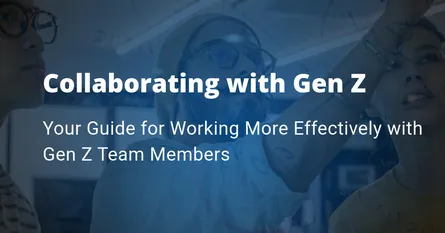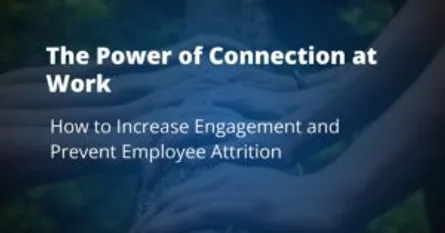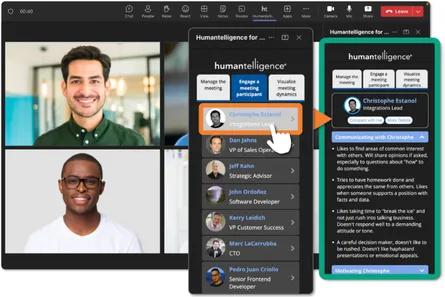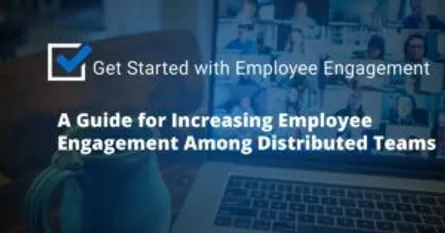
Creating Positive Connections from Asynchronous Communication Tools: Slack & Microsoft Teams
- Admin
- Team Communication , Collaboration , Data
- 21 Feb, 2024

There’s just no denying it. Positive connections in the workplace are paramount. They breed collaboration, spark innovation, and foster employee satisfaction. So how do smart organizations create positive connections in a workplace where colleagues are working from different locations and even different time zones? The secret lies in asynchronous communication.
In answer, companies are increasingly adopting asynchronous tools like Slack and Microsoft Teams. They provide a unique avenue for cultivating connections that transcend geographical boundaries and time zones.
Asynchronous tools facilitate communication that doesn’t require an immediate response. In turn, this allows flexibility and convenience which, of course, is extremely important in our fast-paced work environments. While these tools are often associated with work-related interactions, their potential to foster positive interpersonal connections is immense.
However, leveraging asynchronous communication tools to create positive connections can be challenging. How can we ensure meaningful interaction while dealing with delayed responses? How can we maintain camaraderie among team members who may never meet in person? This article aims to address these questions and more while offering actionable strategies for fostering positive connections using Slack and Microsoft Teams.
Understanding Asynchronous Communication
Asynchronous communication is a form of communication that doesn’t require all parties to interact concurrently. It’s like the digital equivalent of leaving a note on someone’s desk. This style of communication has become crucial in today’s most common work environments. Team members may be in a meeting or “heads down” working and the interruption of a phone call or a desk drop-by is not preferred.
Asynchronous communication tools offer numerous benefits, including increased productivity, flexibility, and inclusivity. Team members can:
- Manage their time efficiently
- Respond to messages when they prefer, when they are available, and when they’re most productive
- Communicate with colleagues without worrying about disrupting others’ schedules
However, asynchronous communication also poses some challenges. Ensuring everyone is on the same page when they’re not online simultaneously can be tough. It can also lead to feelings of isolation or disconnection among team members. Therefore, it’s essential to be proactive in fostering positive connections using these tools.
Asynchronous Communication Tools: Slack and Microsoft Teams
Slack and Microsoft Teams are leading platforms in the realm of digital communication. Offering a range of features from direct messaging to file sharing, these tools facilitate seamless and efficient communication. But more than that, they provide opportunities to create and foster positive connections among team members.
Slack operates with a focus on channels and direct messaging. This allows for streamlined conversations on a variety of topics. Microsoft Teams integrates with the broader Microsoft Suite. Which supports project collaboration in addition to communication. These features encourage:
- Work-related discussions
- Casual conversations
- Team bonding
It’s important to note that both of these platforms offer features that allow for real-time communication as well. This flexibility caters to different communication styles and needs, making them powerful tools for creating positive workplace connections.
Strategies for Creating Positive Connections through Asynchronous Tools
Recognizing that these tools are playing an increasingly important role in digital-first workspaces, it is crucial for organizations to leverage them in a way that creates positive connections and more effective collaboration. The following suggestions can help your organization get the most out of asynchronous communication tools like Slack and Teams.
Develop a Clear and Consistent Communication Protocol
A well-defined communication protocol is the foundation for creating positive connections. Especially when it comes to asynchronous tools and remote workers. This protocol should cover all aspects of your team’s communication, including:
- Which tools, channels, and threads to use for what purposes
- Expectations for response times
- What type of information should be shared in such a tool compared to email or a meeting
- Guidelines for respectful and productive communication
Similarly, establishing ‘quiet hours’ during which direct messages are discouraged is a good best practice. This can help team members respect each other’s time.
Clear communication guidelines help avoid confusion, create a sense of order and reliability, and demonstrate respect for each other’s time and effort. This, in turn, fosters trust and positivity among team members.
Encourage Regular Updates and Check-ins
Yes, asynchronous communication allows team members to interact at their own convenience. However, it’s essential to ensure that everyone stays in the loop. Send regular updates about ongoing projects, changes in policies, or team achievements. This practice can maintain a sense of unity and inclusivity.
Additionally, periodic check-ins can help maintain connections. Whether individually or as a team. These check-ins don’t have to be lengthy meetings either. They can simply be a daily or weekly message thread where challenges and current projects are shared. Not only does this practice keep everyone informed, but it also provides opportunities to offer assistance, advice, or encouragement.
Balance Professional and Personal Asynchronous Communication
The primary purpose of tools like Slack and Microsoft Teams is work-related communication. However, they can also be a platform for personal interaction. Casual conversation channels where team members can share personal news or interesting content can encourage camaraderie and make the virtual workspace feel more personal.
These channels also provide an avenue for team members to express their personalities and engage on a more human level. This can strengthen relationships and create a more positive, enjoyable work environment. However, it’s important to maintain a balance and ensure that these interactions remain respectful and inclusive.
Promote and Facilitate Learning
Learning is a powerful bonding tool. Encourage team members to share relevant articles, resources, or learning opportunities in dedicated channels. This not only promotes continuous professional development but also fosters a culture of sharing and collaboration.
Furthermore, consider organizing regular learning sessions where team members can share their expertise or explore a new tool. These sessions can be a great way to facilitate knowledge sharing and build stronger connections between team members.
Celebrate Wins and Acknowledge Efforts
Acknowledging hard work and celebrating wins—no matter how big or small—can boost team morale and cultivate a positive feedback culture. It can be as simple as sending a congratulatory message to a team member who’s done well or sharing team milestones in a common channel.
These practices show team members that their efforts are seen and appreciated, fostering a sense of belonging and positivity.
Embrace Bolt-on Technologies to Optimize Asynchronous Communication
Whether in-office, hybrid, or remote, keeping your teams connected through technology is a must. Beyond using Slack, Teams, or other collaboration software, consider squeezing more from your investment in those tools by integrating a quick bolt-on that gives each team member the insights needed to establish stronger relationships with another.
When drafting an email, chatting with a colleague, or joining a meeting, this add-on automatically surfaces useful, customized tips for more effective communication that ends up helping you improve your relationships at work.
Consider the case of the one-on-one check-ins. We already know that one of the most powerful and simple steps a manager can take to help an employee feel more connected and productive is to check in with them regularly. Learning how to check-in effectively means inviting the conversations that really matter with the employee and providing the support and encouragement they need. Now, add in a layer of knowing how best to approach that employee based on their communication, collaboration, learning, and work styles, and your one-on-ones will be more productive than ever – and your employee will feel more seen and connected than ever.























-Low-Quality.DNBpXyLx_1VXSiM.webp)
.CiqwvMOO_A63sY.webp)






-Medium-Quality.ZFp5mEuF_Z13ebXJ.webp)




